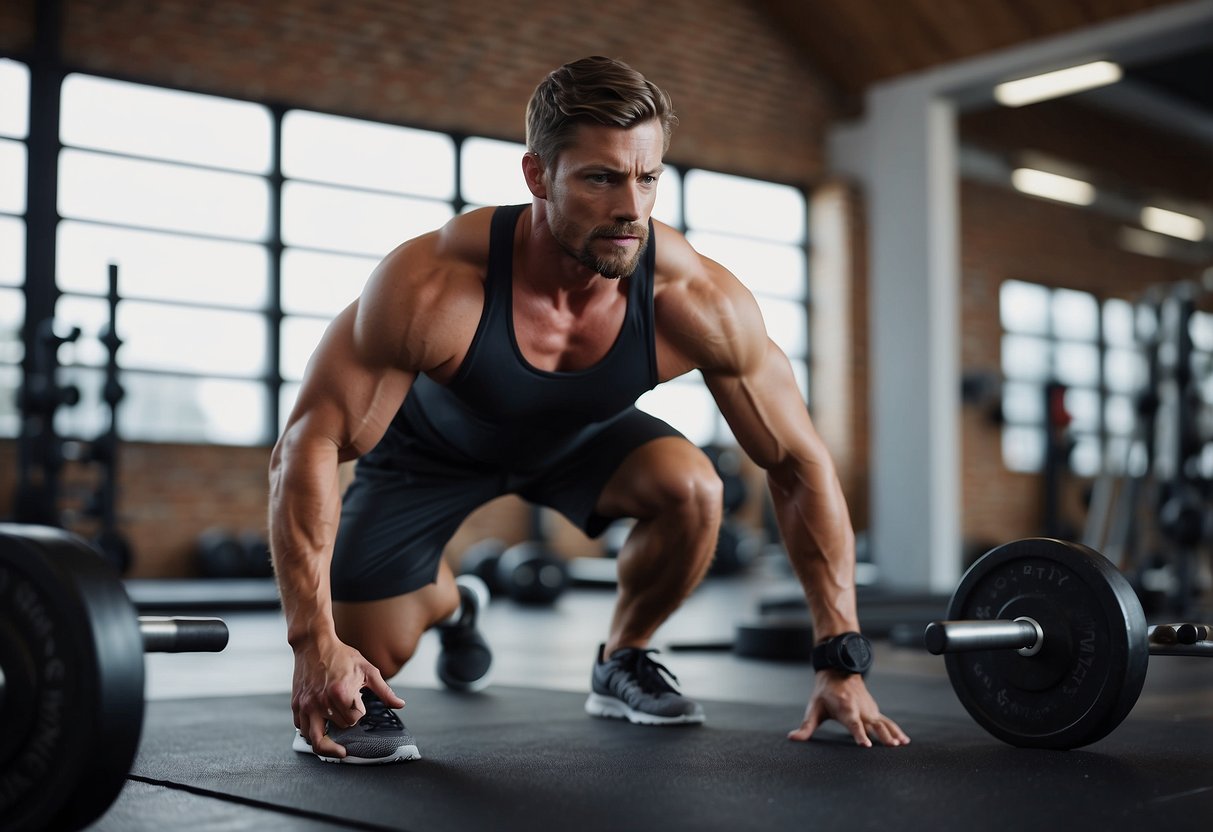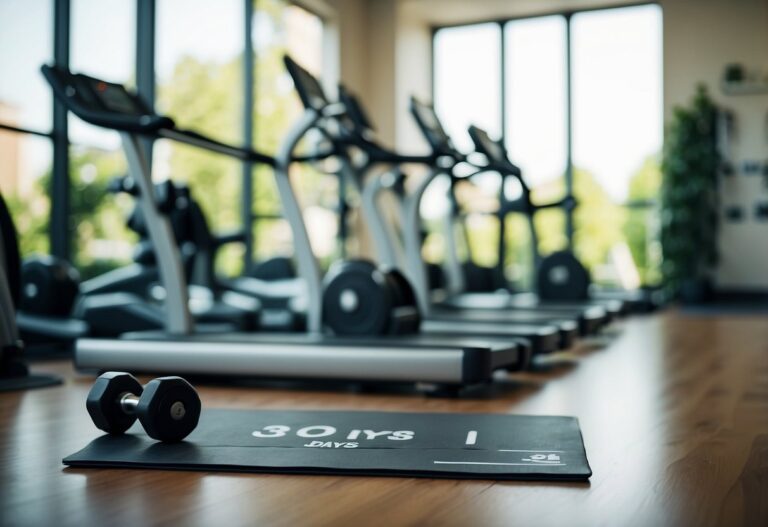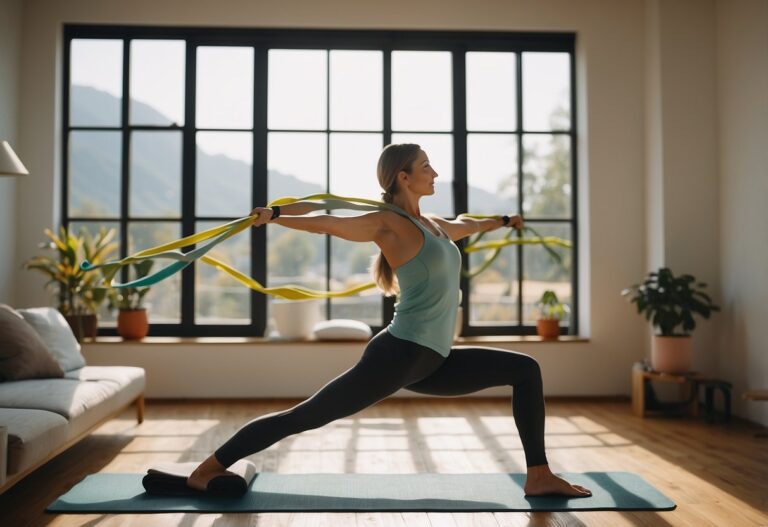High-Intensity Interval Training (HIIT) is a popular fitness trend that can offer great benefits. This type of workout involves short bursts of intense exercise followed by brief rest periods. It’s designed to maximise effort and keep your heart rate up, leading to improved cardiovascular health and fat loss.

If you’re looking to get the most out of your HIIT workouts, it’s important to know how to optimise your routine. Understanding the best practices and tips ensures that you get effective results without risking injury. Whether you’re a beginner or have some experience, these tips will help enhance your workout experience.
Warm-up thoroughly
Warming up before a HIIT workout is very important. It helps prepare your body for intense exercise and can reduce the risk of injury. Start with some light cardio to get your blood moving. For example, you can do 100 single jumps with a jump rope or 50 jumping jacks if you don’t have a rope (12 Minute Athlete).
Include dynamic stretches. Thoracic reach throughs and the cat and camel stretch are great choices (HIIT Weekly). These movements help improve your flexibility and get your muscles ready for action.
In multi-part warm-ups, add some high knees, air squats, and walkouts. These exercises target different muscle groups and improve overall mobility. High knees get your heart rate up, while air squats and walkouts work on strength and flexibility.
I’ve found that a proper warm-up makes my workout feel smoother and lessens the chances of strains. It also mentally prepares you for the challenge ahead. Remember, your warm-up doesn’t need to be long—just a few minutes can make all the difference.
Incorporate Compound Exercises
Using compound exercises in your HIIT workout is a great way to maximise efficiency and results. These exercises work multiple muscle groups at the same time, helping you burn more calories and build strength.
For example, squats involve your legs, core, and even your back. By adding weights, you increase the intensity and the benefits.
Another good choice is the push-up. It targets your chest, shoulders, arms, and core. You can modify push-ups to make them easier or harder based on your fitness level.
Make sure to mix in exercises like deadlifts, rows, and lunges. Each of these exercises engages several muscles, ensuring a full-body workout.
Use interval timers
Using interval timers is key to getting the most out of your HIIT workouts. These timers help you keep track of your high-intensity and rest periods without having to constantly look at a clock.
Start with a dynamic warm-up. Spend 5 to 10 minutes warming up with exercises like jumping jacks or lunges.
During your workout, you should focus on the work and rest intervals. For beginners, try 30 seconds of high-intensity exercise followed by 2 minutes of lower intensity exercise.
Consider trying the Tabata method. This involves 20 seconds of intense exercise followed by 10 seconds of rest, repeated for 4-10 minutes.
Remember, the goal is to push yourself during the high-intensity periods. Using interval timers ensures you’re challenging yourself effectively and taking proper rest.
Stay Hydrated
Staying hydrated during your HIIT workout is crucial. Dehydration can affect your performance and even be dangerous. Aim to drink water throughout your exercise routine.
Start your hydration two hours before your workout by drinking 16-24 ounces of water. About 15 minutes before you start, have another 8 ounces.
During your HIIT sessions, try to drink 16-32 ounces every 30-60 minutes. This will help maintain your energy levels and reduce the risk of cramps and fatigue.
Consider drinking sports drinks if your session is longer than an hour. They can help replenish electrolytes lost through sweat.
Remember to continue hydrating after your workout. Drink plenty of water to help with recovery and keep your body functioning well.
Pay attention to your body’s signals. If you feel dizzy or overly tired, it might be a sign that you need more fluids. Always keep a water bottle handy and listen to what your body needs. Stay hydrated, stay healthy!
Maintain Proper Form
Keeping proper form is essential during your HIIT workouts. This helps to avoid injuries and ensures you get the most out of each exercise.
When doing high-intensity intervals, focus on maintaining a straight back, and avoid slouching. This is crucial for exercises like squats and push-ups.
Engage your core muscles throughout the workout. This means tightening your stomach muscles to help stabilise your body, especially during movements like planks.
Listen to your body. If something feels off or painful, it’s better to stop and check your form than risk an injury.
Mix up your workouts
Variety is key in a HIIT routine to keep things interesting and challenging. Instead of doing the same exercises every time, try mixing it up. One day, focus on bodyweight exercises like push-ups and squats. The next, switch to cardio exercises like sprints or cycling.
Think about incorporating different types of equipment. Do you have access to dumbbells or a kettlebell? Use these for strength-focused HIIT sessions. You can also try using resistance bands for added challenge.
Changing the intensity and duration of each exercise can make your workouts more effective. For example, instead of always sprinting for 30 seconds, try 20 seconds of high intensity followed by 10 seconds of rest. This change keeps your body from getting too comfortable with a routine.
Making small changes can prevent boredom and keep you motivated. Plus, it helps work different muscle groups, improving your overall fitness levels.
Include Recovery Periods
When planning your HIIT workout, it’s vital to include recovery periods. Your body needs time to rest and repair itself.
Taking 24 to 48 hours of rest between intense workouts is recommended. This downtime lets your muscles heal and grow stronger.
Mixing in lighter workout days or rest days doesn’t just prevent injury; it helps you make consistent progress on your fitness journey.
Focus on Intensity, Not Duration
When it comes to HIIT, the key is to push yourself to the maximum during each high-intensity interval. It’s better to do shorter, intense workouts than longer, less intense ones.
Experts recommend a duration of 15-30 minutes per session. You should be working at 80-95% of your maximum heart rate during these periods. This way, you’ll burn more calories and improve cardiovascular health.
So, next time you’re doing HIIT, remember: intensity is what counts, not how long you’re exercising.
Start with Bodyweight Exercises
Starting with bodyweight exercises is a fantastic way to begin your HIIT journey.
Bodyweight exercises like push-ups, squats, and burpees require no equipment. This makes them perfect for home workouts.
These exercises help build strength, endurance, and flexibility, key components for any fitness routine.
If you’re new to HIIT, exercises such as jump squats and mountain climbers can be easy to do at home, without needing to go to a gym.
Feel free to modify the exercises to match your fitness level.
Monitor Your Heart Rate
Keeping an eye on your heart rate is key in a HIIT workout. Use a heart rate monitor to ensure you’re in the right zone.
Your target heart rate should be around 80-95% of your maximum heart rate. To find your maximum heart rate, subtract your age from 220. For example, if you are 30 years old, your maximum heart rate would be 190 beats per minute.
Using a heart rate monitor helps you push harder during high-intensity periods. It also ensures you’re recovering properly during rest intervals.
Check out this guide on HIIT heart rate for more details.
Benefits of HIIT Workouts
High-Intensity Interval Training (HIIT) offers various benefits that can enhance your overall fitness and health. From boosting cardiovascular health to increasing fat burning and improving your metabolic rate, HIIT can be a great addition to your workout routine.
Enhanced Cardiovascular Health
HIIT workouts can significantly improve your cardiovascular health. When you engage in exercises that raise your heart rate to 80-95% of your maximum heart rate, your heart becomes more efficient. This means it pumps blood more effectively, reducing the risk of heart-related diseases.
During the intense intervals, your heart works hard, strengthening over time. The recovery periods allow your heart rate to drop, but it stays elevated enough to keep the cardiovascular system engaged. This cycle of intensity and recovery strengthens not just the heart but also the entire circulatory system.
Moreover, studies have shown that HIIT can help lower blood pressure and improve blood sugar levels. This is particularly beneficial for individuals with hypertension or diabetes. The short, intense bursts of activity make HIIT an efficient way to keep your heart healthy.
Efficient Fat Burning
One of the major advantages of HIIT is its ability to burn fat efficiently. Unlike steady-state cardio, HIIT continues to burn calories even after you’ve finished your workout. This afterburn effect, known as excess post-exercise oxygen consumption (EPOC), helps you burn more calories throughout the day.
Sprinting, cycling, or any high-intensity activity can elevate your metabolic rate, leading to greater fat loss. The high-intensity intervals push your body to use fat as a fuel source. Even though the workout sessions are short, typically ranging from 15 to 30 minutes, they can be just as effective, if not more, than longer workouts.
For beginners, starting with a sprint workout, such as an 8-second sprint followed by 12 seconds of jogging, can be very effective. This combination of intense and moderate exercise forces your body to adapt, making it more efficient at burning fat.
Improved Metabolic Rate
HIIT is known to boost your metabolic rate even after the workout has ended. This means your body continues to burn calories for hours post-exercise. The reason behind this is the high demand for energy during the recovery period, which forces your body to work harder to return to its resting state.
This increase in metabolic rate is not only due to the intense activity but also the muscle repair and recovery process. Your body needs to expend energy to repair muscles and replenish energy stores, which contributes to the increased calorie burn.
Moreover, HIIT has been shown to promote muscle building while preserving existing muscle mass. This is crucial because muscle tissue burns more calories than fat tissue, even at rest. Thus, incorporating HIIT into your workout routine can lead to long-term improvements in your metabolic rate.
Common Mistakes to Avoid in HIIT
High-Intensity Interval Training (HIIT) is effective for boosting fitness and burning calories, but there are common mistakes that can hinder progress or lead to injury. Here are a few key errors to watch out for.
Inadequate Warm-Up
Jumping into a HIIT workout without a proper warm-up is a major misstep. Warming up prepares your muscles and joints for the intense activity ahead, reducing the risk of injuries.
A good warm-up should last about 5-10 minutes and include dynamic stretches like leg swings, arm circles, and light jogging. This increases your heart rate gradually and improves blood flow to your muscles. Skipping this step can lead to strains or sprains because your body isn’t ready for sudden, intense movements.
Proper warm-up exercises make a huge difference, especially for beginners. Neglecting it could mean not only a painful injury but also a longer recovery time, which can set back your fitness goals.
Overtraining
Overdoing HIIT can be counterproductive. While it’s tempting to think that more is better, doing too many HIIT sessions in a week can lead to burnout, fatigue, or even injury.
Trainers recommend limiting HIIT to three to five times a week to allow your body adequate recovery time. You should incorporate other forms of exercise like walking, stretching, and weight training. These help balance your routine and improve overall fitness.
Insufficient rest between sessions can decrease your performance and increase the risk of overuse injuries. Pay attention to your body; if you’re feeling constantly sore or fatigued, it might be time to ease up.
Poor Form
Maintaining proper form during HIIT is crucial to avoid injury and get the most out of your workout. Poor form not only makes exercises less effective but can also cause harm to muscles and joints.
Focusing on technique is essential, especially when you’re exhausted. For example, during burpees, ensure your back stays straight during the push-up and that your knees track over your toes when you jump. Watching videos or working with a trainer can help you learn the correct form.
It’s easy to let form slip when pushing for that last rep. That’s when injuries like pulled muscles or strained joints occur. Always prioritise quality over quantity.
Optimising Your HIIT Routine
To get the most out of your HIIT workouts, it’s essential to choose the right intervals and keep your routine varied. Here’s how you can fine-tune your approach.
Choosing the Right Intervals
Selecting the proper interval ratio is crucial. A common starting point is a 2:1 ratio, where you work hard for 20 seconds and rest for 10 seconds.
Another approach is the 1:1 ratio, featuring equal work and rest times. This can be tailored depending on your fitness level. Beginners might start with 30 seconds of work and 30 seconds of rest.
Listen to your body and adjust the times to find what works best. Using a stopwatch or HIIT timer app can help keep track of intervals accurately.
Incorporating Variety
Variety keeps your workouts engaging and prevents plateaus. Mix up your exercises by combining different types of movements, like sprints, cycling, and bodyweight exercises. You can also experiment with different interval lengths.
Try adding in strength training elements like squats and lunges to target different muscle groups. This not only boosts overall fitness but also reduces the risk of injury by balancing muscle development.
Keeping a log of your workouts can help track progress and ensure you’re continually challenging yourself. Rotate between high and low impact exercises to give your body a balanced workout.







